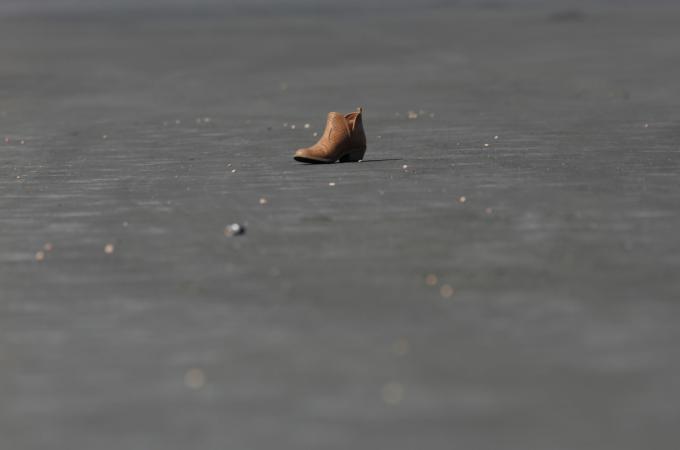Mass murder and our culture of death
On Nov. 14, Kevin Janson Neal paced about a remote elementary school in the small Northern California community of Rancho Tehama Reserve, apparently looking for children to shoot during a killing spree that left five dead and at least 10 wounded in seven different locations.
Thanks to the quick actions of a school secretary, the shooter was unable to enter the classrooms and was left firing a semi-automatic rifle through windows and walls, seriously injuring one child.
When the news broke during the bishops' fall assembly in Baltimore that same day, Bishop Jaime Soto of Sacramento, California, took the microphone to ask his brother bishops to pray the Hail Mary for those victims of the shooting in his diocese.
That the shooting did not engender further discussion at the bishops' assembly, nor a great deal of coverage in the media, may be a sign of how desensitized we are all becoming to the terror of mass gun violence. Five years after the Newtown, Connecticut, massacre of 20 children, even the targeting of a school no longer surprises.
The bishops did release a statement Nov. 7 in the wake of recent mass shootings in Las Vegas (where 59 died and at least 440 were injured) and the First Baptist Church of Sutherland Springs, Texas (27 died and 20 wounded).
In that statement, Bishop Frank J. Dewane of Venice, Florida, chairman of the U.S. bishops' Committee on Domestic Justice and Human Development, urged "a real debate about needed measures to save lives and make our communities safer."
Bishop Dewane said the U.S. bishops continued to urge a "total ban on assault weapons," as well as universal background checks, limitations on high-capacity magazines and "improved access to mental health care for those who may be prone to violence."
Cardinal Daniel N. DiNardo of Galveston-Houston, the president of the U.S. bishops' conference, also issued a forceful appeal: "We must come to the firm determination that there is a fundamental problem in our society. A culture of life cannot tolerate, and must prevent, senseless gun violence in all its forms."
A report by The New York Times that compared the United States with other countries in terms of mass shootings came to the conclusion that "the only variable that can explain the high rate of mass shootings in the America is its astronomical number of guns."
Americans make up 4.4 percent of the world's population, but the Times said we own 42 percent of the world's guns. Only Yemen has a higher rate of shootings, and it has the second-highest rate of gun ownership.
America also leads in gun suicides: 21,175 suicides by gun in 2013, almost twice as many deaths as by homicide. As an addiction counselor recently told me, the availability of a gun makes the suicide impulse more likely to be successful, especially for men.
The recent statements by U.S. church leaders, like the handwringing expressions of sympathy by politicians whenever a new massacre happens, does not necessarily lead to legislative change, however.
After the Las Vegas slaughter, in which the killer used a device called a bump stock to turn his rifle into a weapon capable of firing up to 100 rounds in seven seconds, even pro-gun politicians said they should be restricted. Six weeks later, no action has been taken and one manufacturer of the device has resumed sales.
Regardless of the political paralysis, however, the church reminds us that choosing a culture of life not only means addressing abortion and physician-assisted suicide, but also the proliferation of weapons that contribute so terribly to the suicide, homicide and mass shooting rates that are plaguing our society.
- Greg Erlandson is director and editor-in-chief of Catholic News Service.



















